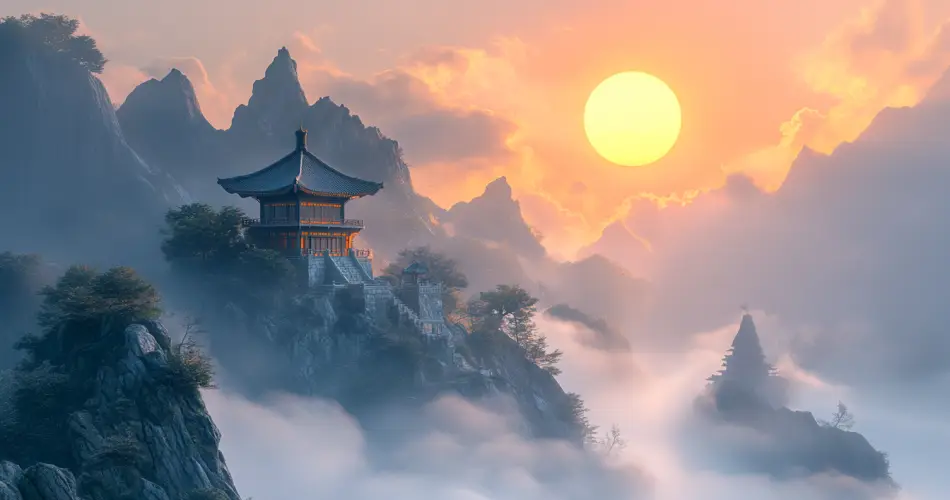The Korean peninsula is one of the oldest inhabited places in the world. Humans migrated to the area from mainland China about 700,000 years ago.
Given the region’s ancient history, it is no surprise that Korean mythology features some of the oldest and most fascinating myths and legends about gods, spirits, and mythical creatures.
This mythology can be viewed from two angles;
- Written Mythology
- Oral Mythology.
The written record of Korean mythology dates back to the 12th century. These records tell the story of ancient monarchs who founded historical Korean kingdoms. They also contain myths and legends surrounding notable Korean families.
These records served the practical function of providing legitimacy to the state and the ruling class.
The oral history and legends are much older and dramatic than the written mythology. These stories played an important religious role and were often used by shamans in their spiritual practice. Since oral records are not recorded, they are very fluid and have evolved significantly over the years.
Korean mythology was also heavily influenced by a combination of Buddhism, Taoism, and Confucianism philosophies from China.
Creation Story in Korean Mythology
According to written and oral records, the creation story differs depending on the location where the story is being told.
However, many of these stories follow a similar pattern: a deity or god descends into the chaos on earth, creates the land and everything on it, and eventually creates a the first Korean nation.
Mireuk and Seokga Creation story
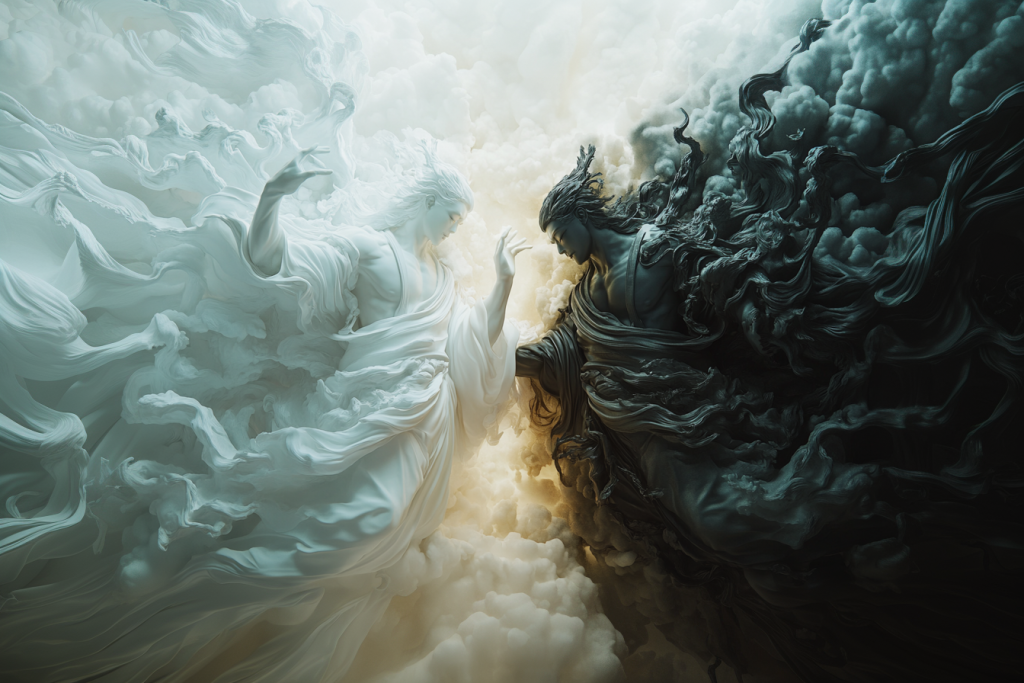
One famous creation story involves the Korean creator god Mireuk and the trickster god Seokga. According to the legends, in the beginning, the world was in chaos, and heaven and earth were joined together.
After Mireuk came into existence, he separated heaven and the earth and used four massive copper pillars to keep the world apart.
After living on this newly formed earth for some time, the Mireuk became bored and prayed to the heavens for companionship. Two caterpillars descended from heaven and became the first man and woman.
Soon, Seokga, the trickster god, saw the world’s beauty and wanted it for himself. He challenged Mireuk to three contests, which he won through trickery. He then became the first ruler of the earth.
Mireuk left the earth and returned to heaven in anger. However, in Mireuk’s absence, the era of peace and enjoyment was replaced by sickness, sorrow, and suffering, which persist today.
Creation Myth of the Tangun
Another popular Korean creation myth involves the creation myth of the Tangun. This myth involves Hawngun, the heavenly prince, and Hwanin, the world’s supreme ruler.
Hawngun was bored in heaven. He looked upon the earth and saw how beautiful it was. He was immediately overwhelmed with the desire to possess and rule over it. His father permitted him, and he descended to the earth on Mount Taebaeksan, which is translated to mean”Great White Mountain.”
The City of god
Hawngun arrived with 3000 heavenly followers and brought three seals and three ministers to help him rule on Earth. These ministers were the Earl of the Wind, the Master of Rain, and the Master of Clouds.
The heavenly prince founded a city and called it “The City of God”. What happened at this point is unclear, but it is believed that Hawngun shared the knowledge of agriculture, hunting, and some 300 other skills with the people of his city.
The first woman
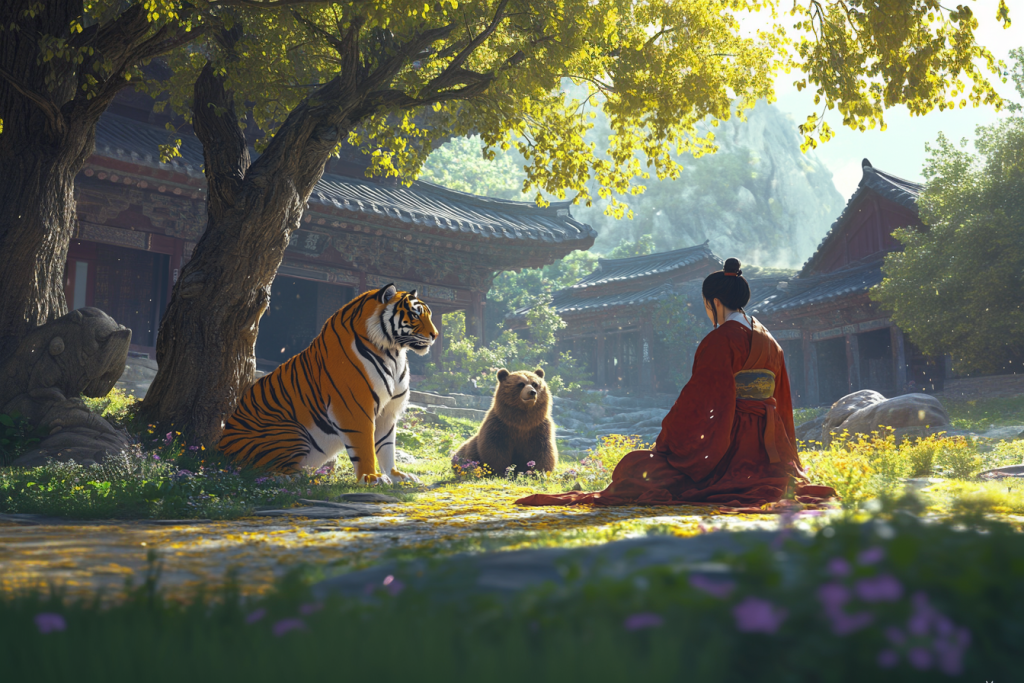
The story dramatically shifts to a bear and a tiger who approached Hawngun and begged him to turn them into humans.
Hawngun agreed to these demands and instructed them to go into isolation for 100 days in a cave and eat only Mugwort and garlic during this time. If they were able to complete this task, they would become humans.
The two animals entered the cave and started the challenge. However, halfway through, the tiger gave up and left the cave. The bear persisted and completed the challenge. As a reward, the bear was transformed into the first woman, who was called Ungyo.
Ungyo would later become the wife of Hwangun. Together, they gave birth to a son named Tangun. Tangun became the first king of Gojoseon in 2333 BCE (according to traditional Korean chronology). He ruled for 1500 years and peacefully retreated to Teabak-san to become a mountain god.
Gods and Goddesses in Korean Mythology
The oral and written mythology of Korea mentions several gods and goddesses that controlled the world and everything in it.
Some of these supernatural beings were so exceptional and heroic mortals that they were turned into deities after death. Others are deities that have existed since the beginning of time.
Mago Halmang
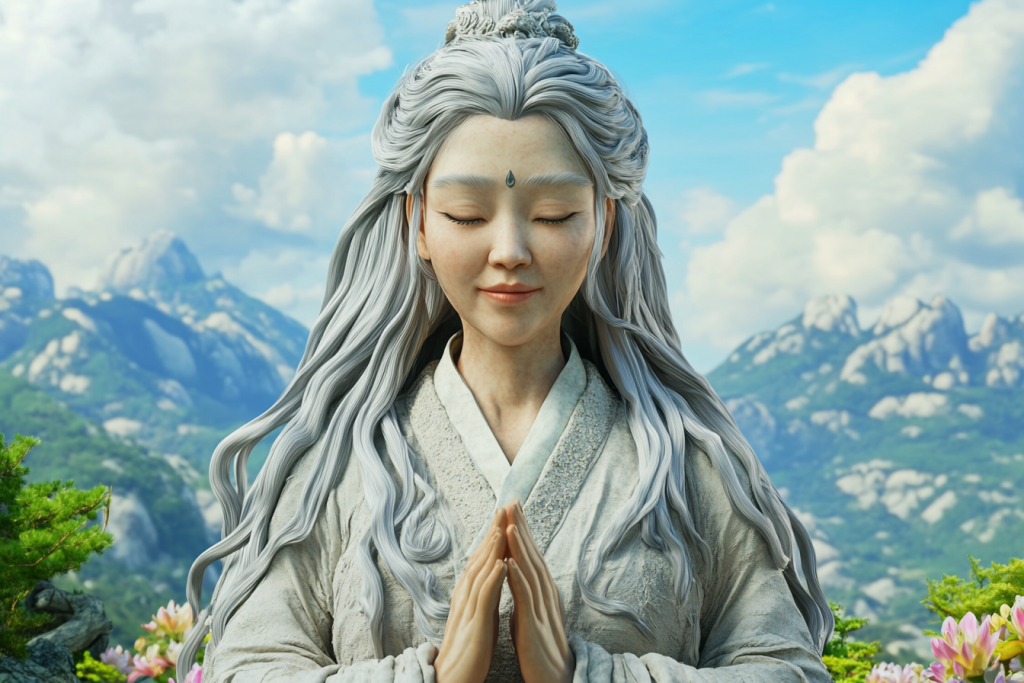
Mago Halmang is believed to be one of the gods who created the world. She is a mother goddess who is revered as a protector of mothers, especially those who are pregnant.
Mago looks after the home and keeps little children safe.
Hwanin/Sang-je
Hwanin, also known as Sang-je, is the supreme god in Korean mythology, often called the “Heavenly Emperor.” As the father of Hwanung and the ultimate source of divine authority, he plays a vital role in the Korean creation myth. Hwanin governs the heavens and has ultimate power over everything.
Mireuk
Mireuk is another creator god in Korean mythology. He is also believed to be the god of truth, order, and balance. Although he created the world, he was forced to give this up to Seoka after losing a contest.
The departure of Mireuk from the world caused suffering. It is believed that god will come back one day and bring everlasting peace and joy with him.
Haemosu
Haemosu is believed to be the sun of the heavenly king Sang Je. He also has a fierce reputation as a powerful celestial warrior.
As the father of Jumong and the founder of the Goguryeo kingdom, Haemosu’s legend is tied to the origins of ancient Korea. He is famous for his romance with Yuhwa, the river goddess.
Haemosu was probably a real king who was revered and worshipped as a god after his death.
Seokga
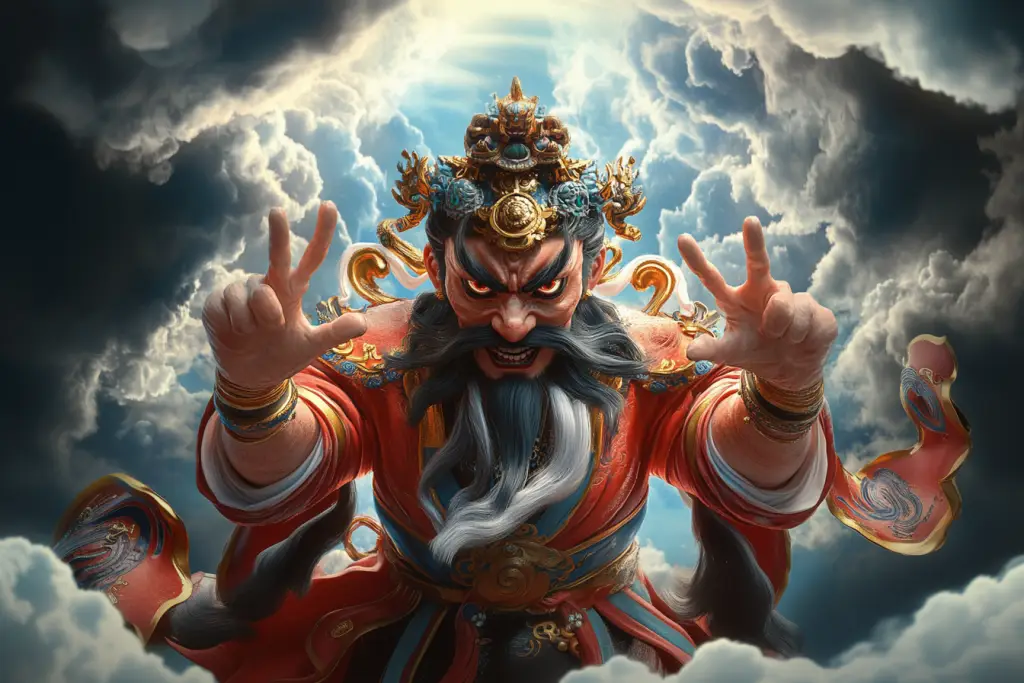
Seokga is a trickster god who created the world. The god triked Mireuk in a contest, causing suffering and pain to emerge in the world.
Sanshin
A mountain god who is often represented as an old, peaceful man. He can also transform into a mountain tiger. This deity is worshipped by shamans all over Korea.
Korean Mythological Creatures and Spirits
Different literature and historical accounts give different narrations of the mythological creatures and spirits in Korean history.
Many of these creatures vary due to the different religions that permeate Korean society. With no particular religion dominating, there are various accounts of mythical creatures and spirits.
Chollima
The Chollima is a winged horse that originates from Chinese traditions. This horse is believed to be so fast that it can only be ridden by a god.
Bonghwang
The Bonghwang is the Korean equivalent of the mythical Chinese phoenix. They are benevolent creatures often associated with royalty, power and rebirth.
Bulgae
A dog beast from the kingdom of darkness that chases the moon and the sun. It is believed that these creatures were sent by the king of the underworld, who intends to illuminate the underworld with light from the sun and the moon.
The Bulge is also believed to cause solar/lunar eclipses when it bites the sun. The creature is similar to the Bakunawa in Philippine mythology.
Chonggak Dokkaebi
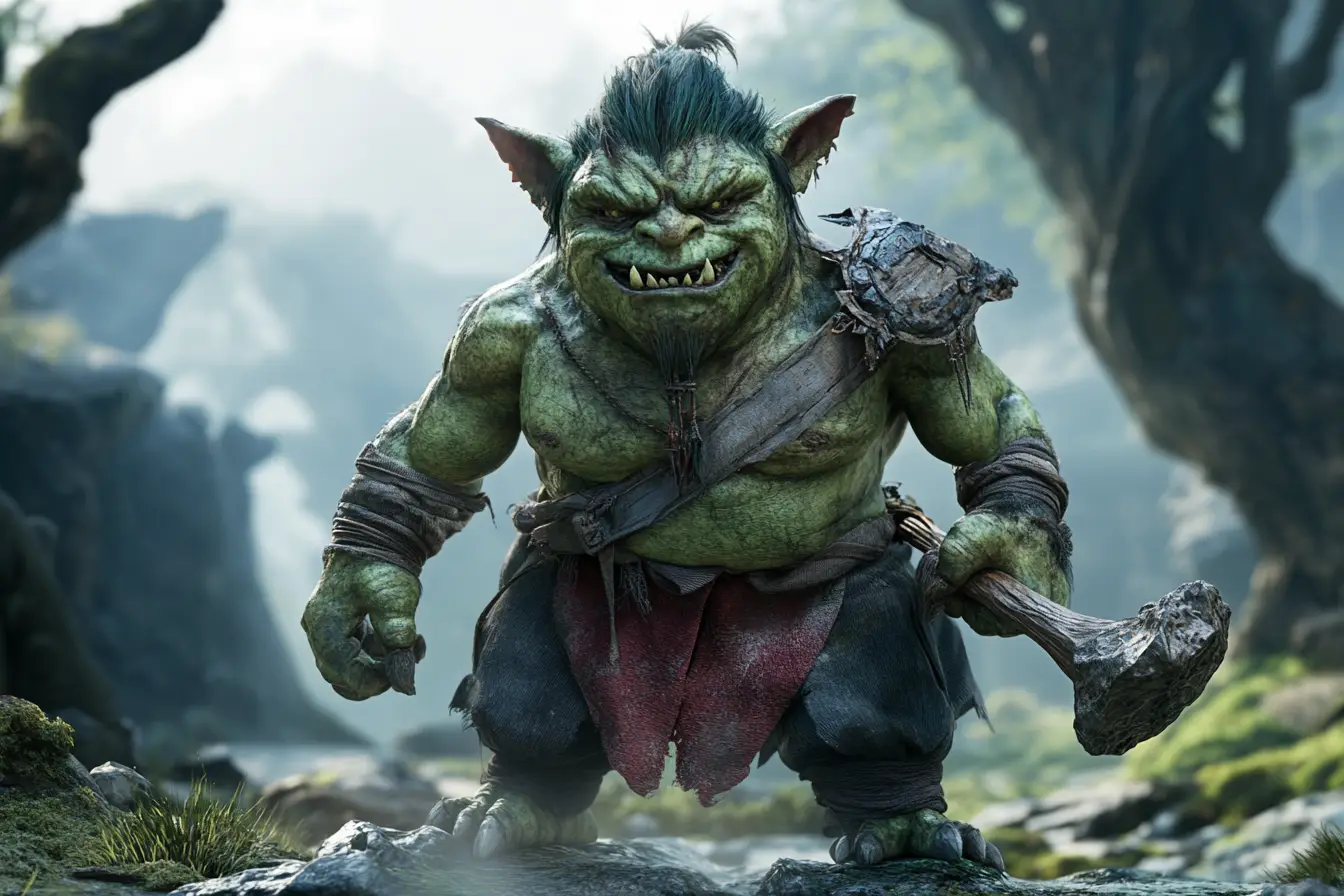
The Dokkeabi are mythical creatures that are compared to goblins. They are mischievous creatures that animate objects and play pranks on people. They love traditional Korean wrestling and will often challenge travellers to a match.
The Egg Ghost/ Dalgyal Guishin
This ancient Korean mythical creature is said to exist without hands, legs, or even a head. It looks like an egg and carries bad luck. It is said that anyone that looks at this egg will die.
